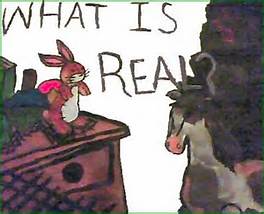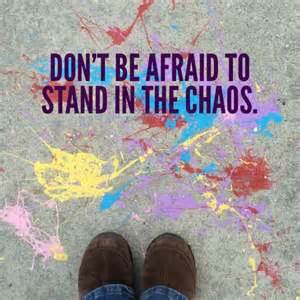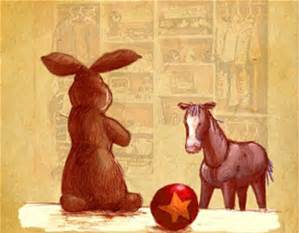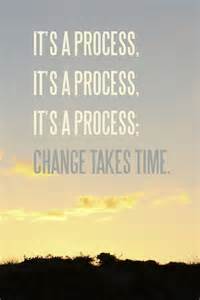
Dusting my bookshelves last week, the book THE VELVETEEN RABBIT (a 1922 children’s story by Margery Williams) “jumped” off the shelf and landed on the floor. I picked the book up and promptly forgot about my dusting and began to reread the book. In rereading the book, I began to see many parallels between the transitions we experience on our journey of change with those of the Velveteen Rabbit and his journey of change; of becoming “real.”
William Bridges, a noted leader in the field of managing change, makes a distinction between change and transition. According to him, change is what happens to you; it is situational. Transition, however, is what you experience as you internalize and come to terms with the details of the new situation that comes with the change. There are three stages to all transitions: ending something, roaming the wilderness (or what William Bridges calls the “neutral zone”), and our vision (or what Bridges calls our “new beginning”). This week, let’s begin to explore these three stages using the Velveteen Rabbit’s journey as our model.

All change begins with an ending; with some sort of loss. “There was once a velveteen rabbit, and in the beginning he was really splendid. He was fat and bunchy, as a rabbit should be; his coat was spotted brown and white, he had real thread whiskers, and his ears were lined with pink sateen. On Christmas morning, when he sat wedged in the top of the Boy’s stocking, with a spring of holly between his paws, the effect was charming.” The story goes on to say how the Boy played with the rabbit (“for at least two hours”) until relatives came and with new presents to open, the Velveteen Rabbit was forgotten and put away in the toy cupboard. For the Velveteen Rabbit, his role as a favorite toy ended. He experienced many losses – being held and revered; being loved and made to feel important and needed. He lost his comfort zone; the safety and security he felt when he was with the Boy.

We go through similar emotions when change enters our life. Our routines, life as we had been living it, become different. We enter into our own version of the toy cupboard where we may feel neglected, invisible, and lost. We may no longer feel as loved, as important, as needed. The loss of what was becomes very apparent. Our comfort zone gets rocked and the safety and security we felt is no longer the same.
As with the Velveteen Rabbit, time in the ‘cupboard’ becomes our wilderness, our neutral zone. The wilderness is a place where the old and the new overlap. I liken this wilderness to what the early pioneers felt when they ventured beyond their “comfort zone.” For them, there was a lot of confusion with new sights, sounds, and experiences. The rules they followed in their former place no longer applied, yet new rules for this new territory, this “wilderness,” had not yet been established. The further they got on their journey, they could no longer see where they came from and they couldn’t see exactly where they were going. At times there was probably a sense of feeling lost and at other times these pioneers had to gain a new sense of direction. There had to be much fear of the unknown in the new, the changed environment.

In the toy cupboard, the Rabbit was made “to feel himself very insignificant and commonplace, and the only person who was kind to him at all was the Skin Horse.” It is to the Skin Horse that the Rabbit asks, “What is REAL?” After change, it is common to look around the new “surroundings” and ask, as the Rabbit did, “What is real?” What is reality now?
Just as the Rabbit questioned himself in the toy cupboard (the wilderness), so do we when we begin to “roam the wilderness.” Who am I? What purpose do I now serve? What comes next? What is real? What is my new reality? All these questions are not uncommon when we spend time in the wilderness. We question ourselves. We question what happened. We question the next steps.
The Velveteen Rabbit had a “touchstone” in the toy cupboard – a friend – the Skin Horse. The Skin Horse was experienced and sensible, much like many of our friends and family. We all need “touchstones” – friends, family – to help us when we find ourselves roaming the wilderness. If we seek out those that are experienced and sensible, they might provide us with sound advice and guidance just as the Skin Horse did for the Rabbit.

When the Rabbit asked the Skin Horse what was real, he wondered if being real was how one was made (“Does it mean having things that buzz inside you and a stick-out handle?”). The Skin Horse replies, “Real isn’t how you are made. It’s a thing that happens to you.” The same is true for us when we seek to find what our new reality will be. The new reality will be a thing that “happens” to us.
The Rabbit continues to question the Skin Horse about how one becomes real. Among other things, Skin Horse tells him, “It doesn’t happen all at once. You become. It takes a long time.” Indeed, it may take a long time for us to discover who we really are and what we are to do in our new reality. Time in the wilderness helps us explore options in the new reality.

While in the wilderness, we may become excited or overwhelmed by the options; by the new possibilities. We may experience confusion. We may experience fear. Check out next week’s post to find out how the Velveteen Rabbit dealt with his time roaming the wilderness and what his new beginning looked like.

Dr. Johnen One can always count on you to take a favorite store, memory or object from one’s past and make it real again. So you have done with the Velveteen Rabbit and the wonderful lessons the story has taught children and we adults for a long time. Many thanks.
You are most welcome. There are so many important lessons in most literature, especially children’s literature. I think it sometimes helps us deal with things when we can relate to someone or something else that has also experienced something similar.
Love that book! Thanks for sharing.
You are welcome!! I, too, love the book and the messages in it.